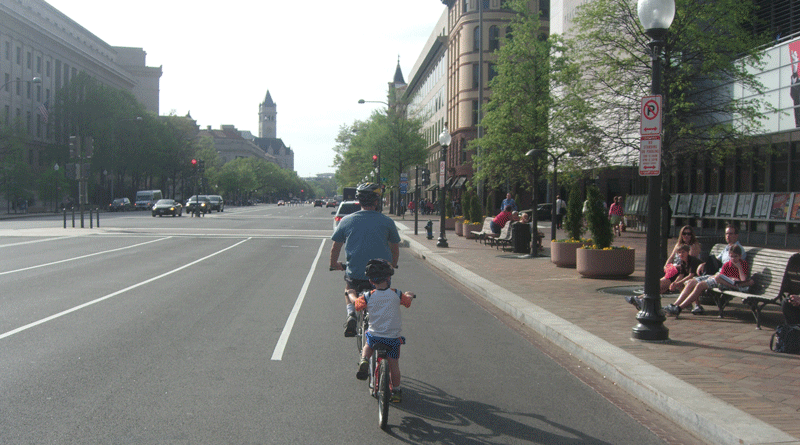America Needs Compete Streets. (2011)
Dan Burden & Todd Litman, The Walkable and Livable Communities Institute and the Victoria Transport Policy Institute. Institute of Transportation Engineers Journal
The Complete Streets movement strives to make all streets safe and accessible for all users by considering the concerns of drivers, transit riders, cyclists, and pedestrians of all abilities at the same level of importance. This article was written by alternative transportation advocates Dan Burden, co-founder and executive director of The Walkable and Livable Communities Institute and recipient of a lifetime achievement award from the New Partners for Smart Growth and the Association of Pedestrian and Bicycle Professionals, and Todd Litman, executive director of the Victoria Transport Policy Institute. The authors provide a comprehensive overview of the movement, of what a complete streets policy should address, and the effects that implementation of such policy can have. Their review is extensive and highlights some potential impacts:
- Increasing pedestrian safety by ensuring adequate sidewalks and slowing down traffic
- Encouraging more physical activity through pedestrian and cycling promotion
- Reducing congestion by providing non-automobile alternatives for short trips
- Reducing auto emissions and resulting asthma with car-use reduction
- Providing accessibility for people without cars, such as the elderly, disabled, economically disadvantaged, and children
- Promoting community cohesion through increased interactions on sidewalks and trails
Complete streets implementation can take many forms. The authors highlight two case studies—Raleigh NC, where pedestrian safety, civic engagement, and economic vitality all increased, and Washington DC, where complete streets techniques were employed in conjunction with the Metro system expansion and led to “a walkable urban development boom.” Burden and Litman also examine some barriers to implementing complete streets policy, including the political and societal inclination to view mobility in terms of automobile accessibility rather than that achieved through multiple modes. They suggest that complete streets policy must come from the local community, with the community guiding the vision of all street improvement projects. The authors see the complete streets movement as a way to build community involvement that can carry over into other local decision-making processes.

